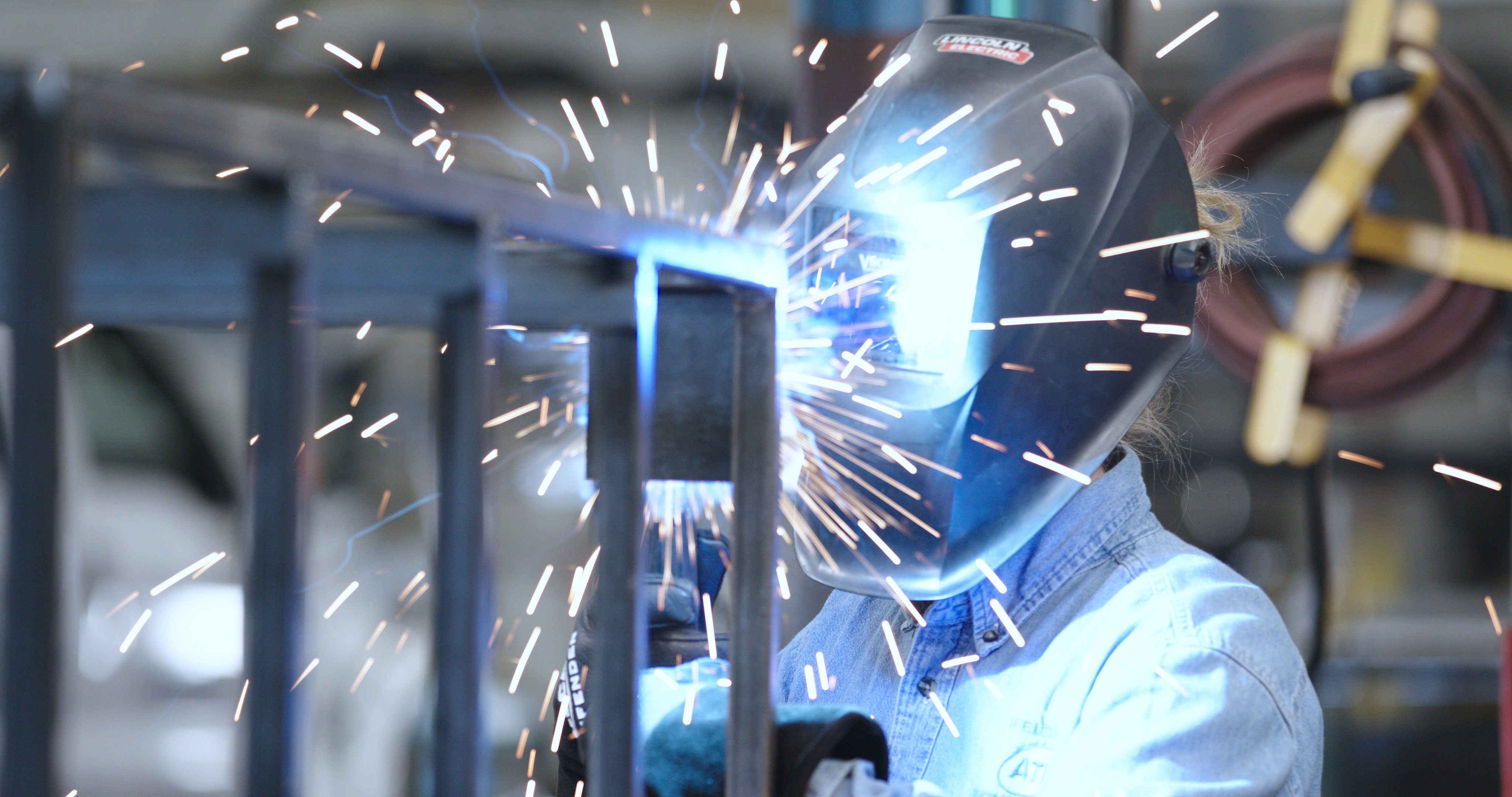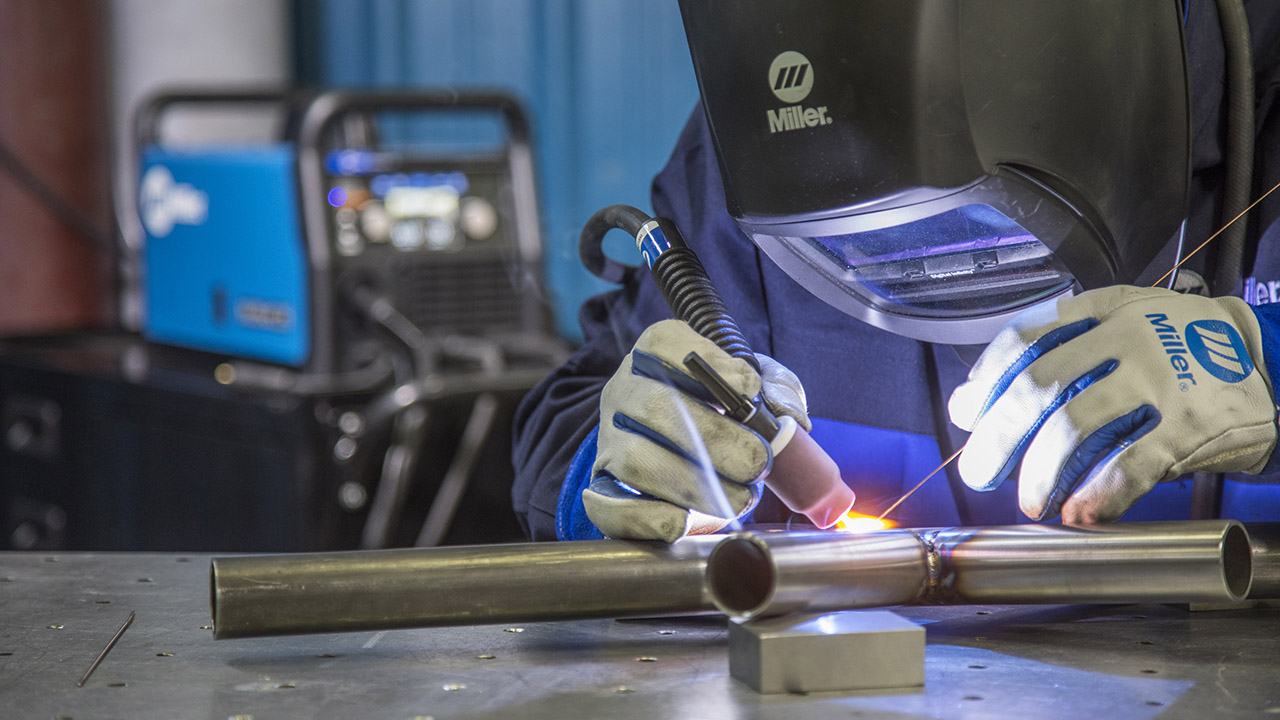All About Welding: Secret Insights Into Techniques and Finest Practices for Success
Welding includes a range of techniques, each suited for particular products and applications. Recognizing these techniques, such as GMAW, SMAW, and TIG, is essential for achieving excellent results. Moreover, the right equipment and safety practices can not be ignored. As prep work and fixing play important functions in the welding process, grasping these aspects can substantially boost the top quality of the final item. What are the essential elements that assure a successful weld?
Comprehending Different Welding Strategies
Welding methods include a selection of techniques, each suited to certain applications and materials. Amongst one of the most common techniques are Gas Steel Arc Welding (GMAW), Shielded Steel Arc Welding (SMAW), and Tungsten Inert Gas Welding (TIG) GMAW, additionally understood as MIG welding, is preferred for its speed and flexibility, making it suitable for slim materials. SMAW, or stick welding, is preferred for its simpleness and performance in outside environments, specifically with thicker steels. TIG welding offers accuracy and control, making it suitable for intricate work and non-ferrous metals (Montana Mobile Welding and Repair Belgrade). Each strategy has its special benefits and factors to consider, permitting welders to pick the most effective method based on the project's needs, product type, and preferred end results. Understanding these methods is important for effective welding
Crucial Welding Devices and Tools
While various welding methods need details skills, the right devices and devices are equally vital for achieving high quality outcomes. Essential welding equipment consists of welding equipments, which vary depending upon the method-- such as MIG, TIG, or stick welding. Safety equipment, consisting of handwear covers, safety helmets, and aprons, assurances safety and comfort throughout the process. Additionally, clamps and components assist protect materials in place, guaranteeing accuracy in welds. Consumables like welding rods, cord, and shielding gas are also important elements that affect the high quality of the weld. Devices such as cutters and mills help with surface preparation and post-weld finishing, adding to a professional outcome. Purchasing premium devices eventually boosts the performance and performance of welding projects.
Safety And Security Practices in Welding
Proper safety techniques are essential in the welding sector to secure employees from possible hazards. Welders have to use appropriate individual protective equipment (PPE), including helmets with proper shading, handwear covers, and flame-resistant garments. Adequate air flow is vital to lower exposure to harmful fumes and gases produced throughout the welding process. In addition, employees ought to be learnt the correct handling of welding tools to avoid accidents. Fire safety actions, such as keeping flammable products far from the welding area and having fire extinguishers readily offered, are required. Normal assessments of tools and offices can aid recognize prospective hazards before they lead to accidents. By adhering to these safety and security practices, welders can create a more secure working environment and reduce threats related to their trade.
Preparing Materials for Welding
Preparing products for welding is a crucial step that substantially influences the high quality and integrity of the end product (Montana Mobile Welding and Repair Fabrication). Correct preparation involves cleaning up the surfaces to get rid of contaminants such as rust, oil, and dirt, which can jeopardize the weld. Techniques such as grinding, sanding, or utilizing solvents are generally employed to attain a clean surface. Furthermore, making sure that the products mesh well is important; gaps can result in weak welds. It's also essential to take into consideration the alignment and positioning of the components, as this will certainly affect the ease of welding and the last result. Picking the proper filler material and making certain compatibility with the base steels is essential for attaining solid, resilient welds.
Tips for Getting High-Quality Welds
Accomplishing premium welds calls for interest to information and adherence to ideal techniques throughout the welding process. Correct joint preparation is essential, making sure surface areas are tidy and complimentary from pollutants. Choosing the proper filler product and welding strategy based on the base steels is crucial for suitable bonding. Maintaining consistent travel rate and angle while welding can promote and prevent problems uniformity. Additionally, controlling heat input is vital; excessive heat can bring about warping and compromised joints. If needed, regularly evaluating the welds throughout the process allows for immediate adjustments. Using proper post-weld therapies, such as cleaning and tension alleviation, can boost the toughness and stability of the weld, inevitably guaranteeing an effective result.
Fixing Typical Welding Issues
Welding typically presents obstacles that can influence the top quality and stability of the last item. Usual concerns such as porosity, irregular weld grains, and overheating can arise, each calling for particular repairing strategies. Recognizing these issues is important for welders to enhance their abilities and achieve ideal results.
Porosity Problems Discussed
Porosity can often be ignored, it remains a critical concern in welding that can compromise the stability of an ended up item. Porosity describes the visibility of tiny gas pockets within the weld grain, which can weaken the joint and lead to early failure. This issue generally develops from impurities, moisture, or incorrect shielding gas insurance coverage during the welding procedure. To reduce porosity, welders ought to validate that the base materials are tidy and dry, utilize suitable protecting gases, and keep consistent welding specifications. On a regular basis evaluating the equipment and setting can also help determine prospective concerns prior to they show up in the weld. Addressing porosity properly is important for accomplishing strong, durable welds that satisfy quality standards.

Irregular Weld Beads
Irregular weld grains can significantly influence the high quality and strength of an ended up product. Various elements add to this problem, consisting of incorrect traveling rate, inaccurate amperage setups, and irregular electrode angles. When the welder relocates too promptly, a bead might appear narrow and do not have penetration, while moving as well slowly can cause too much buildup. Additionally, using the incorrect amperage can cause either undercutting or excessive spatter, both of which concession weld stability. The welder's technique, such as irregular lantern activity, can likewise lead to uneven grain look. To mitigate these problems, welders must concentrate on keeping constant, controlled motions and guaranteeing appropriate devices setups to attain harmony in their welds. Uniformity is crucial to accomplishing strong and trusted welds.
Overheating and Warping Issues
Too much heat these details throughout the welding procedure can bring about considerable getting too hot and buckling problems, influencing the architectural stability of the work surface. These issues usually show up as distortion, which can compromise positioning and fit-up, making additional setting up testing. Factors adding to overheating include the choice of welding criteria, such as voltage and take a trip rate, along with the kind of material being welded. To reduce these issues, welders should preserve consistent travel rate and appropriate warmth input while monitoring the workpiece temperature level. In addition, preheating or post-weld warmth therapy can assist minimize stress and anxieties triggered by fast air conditioning - Montana Mobile Welding and Repair Belgrade Fabrication. Normal evaluation and adherence to ideal practices are crucial in stopping overheating and making certain the longevity and integrity of welded frameworks
Regularly Asked Questions
What Are the Profession Opportunities in the Welding Sector?
The welding industry provides diverse occupation opportunities, consisting of positions as welders, designers, examiners, and educators. Experts can operate in production, building and construction, aerospace, and automobile fields, taking advantage of solid need and affordable salaries wire welders for sale in various duties.
Just How Can I Improve My Welding Speed Without Compromising High Quality?
To boost welding speed without giving up quality, one ought to exercise efficient techniques, maintain equipment, optimize settings, and boost hand-eye sychronisation. Normal training and looking for responses can additionally greatly add to attaining faster, top notch welds.
What Accreditations Are Readily Available for Welders?
Numerous certifications exist for welders, including those from the American Welding Society (AWS), the National Center for Construction Education And Learning and Research (NCCER), and numerous industry-specific companies. These credentials improve employability and show ability efficiency.
Exactly How Does Welding Influence the Features of Metals?
Welding affects the properties of steels by modifying their microstructure, which can lead to modifications in stamina, firmness, and ductility. Heat input and cooling prices throughout the process greatly influence these material attributes.
Can I Weld Dissimilar Metals With Each Other?
